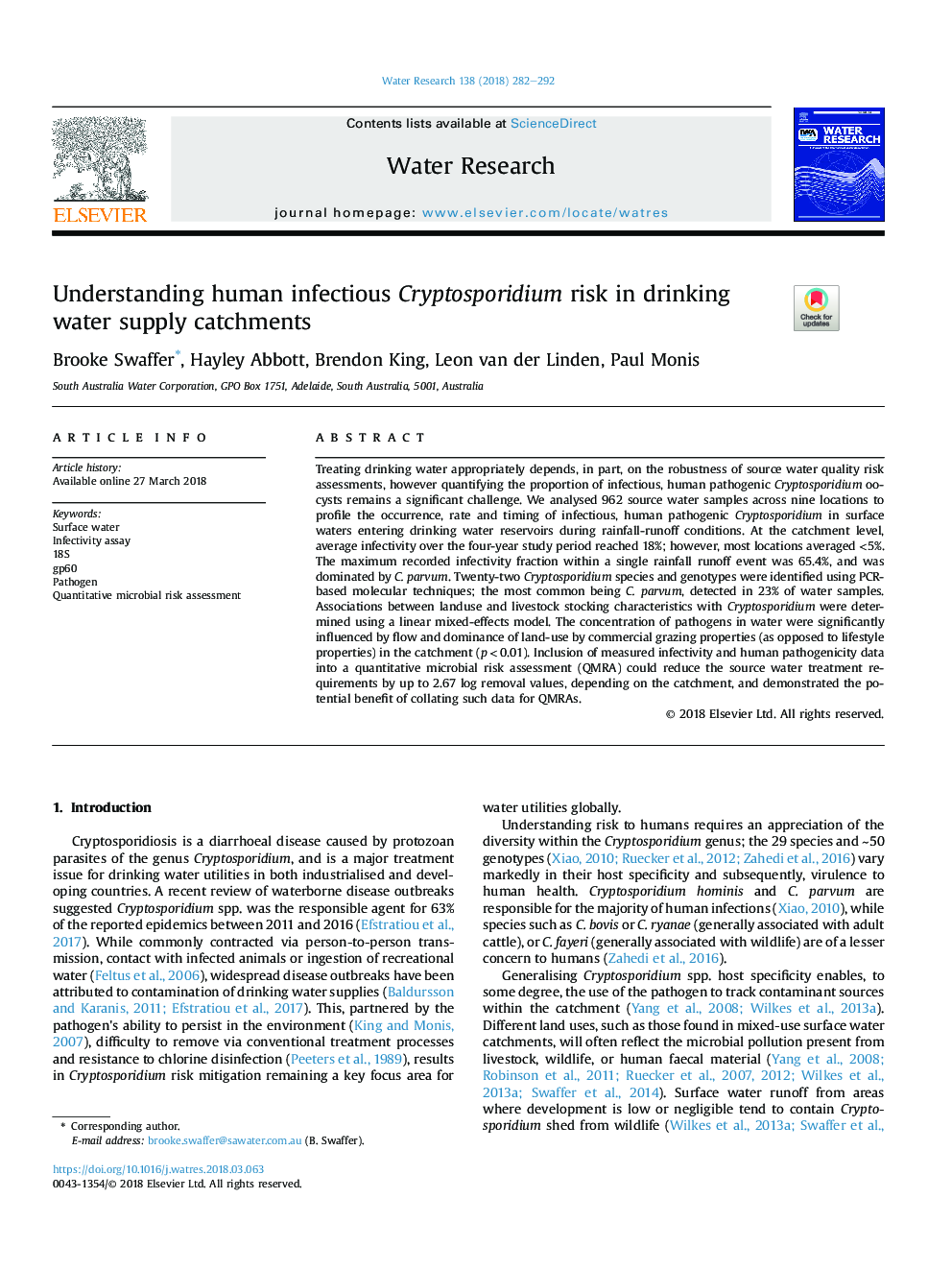| کد مقاله | کد نشریه | سال انتشار | مقاله انگلیسی | نسخه تمام متن |
|---|---|---|---|---|
| 8874047 | 1623030 | 2018 | 11 صفحه PDF | دانلود رایگان |
عنوان انگلیسی مقاله ISI
Understanding human infectious Cryptosporidium risk in drinking water supply catchments
ترجمه فارسی عنوان
درک خطرات کریپتوسپوریدیوم عفونی انسان در حوضچه های تامین آب
دانلود مقاله + سفارش ترجمه
دانلود مقاله ISI انگلیسی
رایگان برای ایرانیان
کلمات کلیدی
موضوعات مرتبط
مهندسی و علوم پایه
علوم زمین و سیارات
فرآیندهای سطح زمین
چکیده انگلیسی
Treating drinking water appropriately depends, in part, on the robustness of source water quality risk assessments, however quantifying the proportion of infectious, human pathogenic Cryptosporidium oocysts remains a significant challenge. We analysed 962 source water samples across nine locations to profile the occurrence, rate and timing of infectious, human pathogenic Cryptosporidium in surface waters entering drinking water reservoirs during rainfall-runoff conditions. At the catchment level, average infectivity over the four-year study period reached 18%; however, most locations averaged <5%. The maximum recorded infectivity fraction within a single rainfall runoff event was 65.4%, and was dominated by C. parvum. Twenty-two Cryptosporidium species and genotypes were identified using PCR-based molecular techniques; the most common being C. parvum, detected in 23% of water samples. Associations between landuse and livestock stocking characteristics with Cryptosporidium were determined using a linear mixed-effects model. The concentration of pathogens in water were significantly influenced by flow and dominance of land-use by commercial grazing properties (as opposed to lifestyle properties) in the catchment (pâ¯<â¯0.01). Inclusion of measured infectivity and human pathogenicity data into a quantitative microbial risk assessment (QMRA) could reduce the source water treatment requirements by up to 2.67 log removal values, depending on the catchment, and demonstrated the potential benefit of collating such data for QMRAs.
ناشر
Database: Elsevier - ScienceDirect (ساینس دایرکت)
Journal: Water Research - Volume 138, 1 July 2018, Pages 282-292
Journal: Water Research - Volume 138, 1 July 2018, Pages 282-292
نویسندگان
Brooke Swaffer, Hayley Abbott, Brendon King, Leon van der Linden, Paul Monis,
